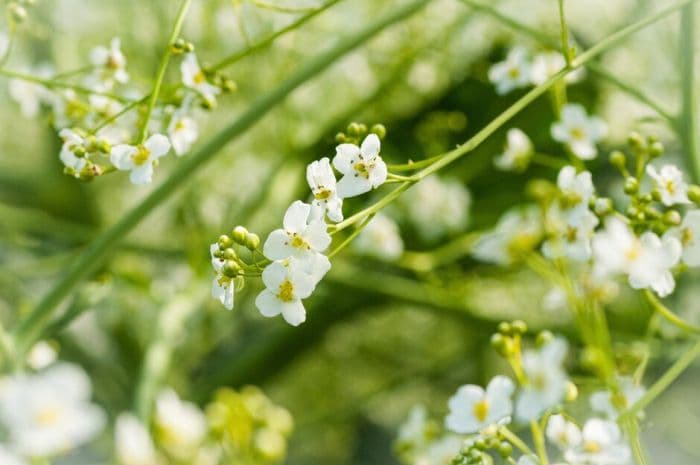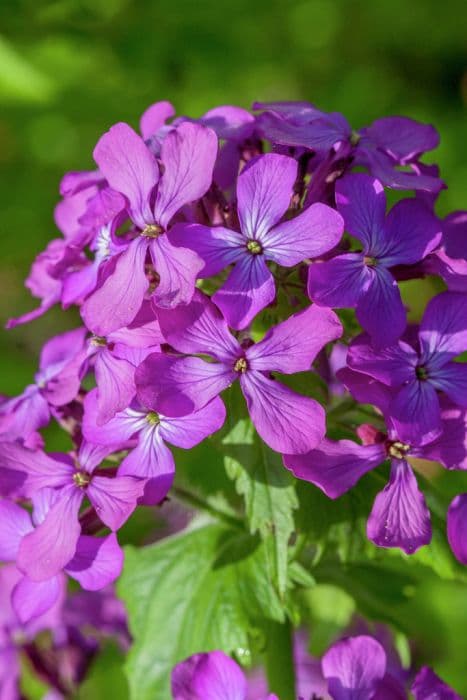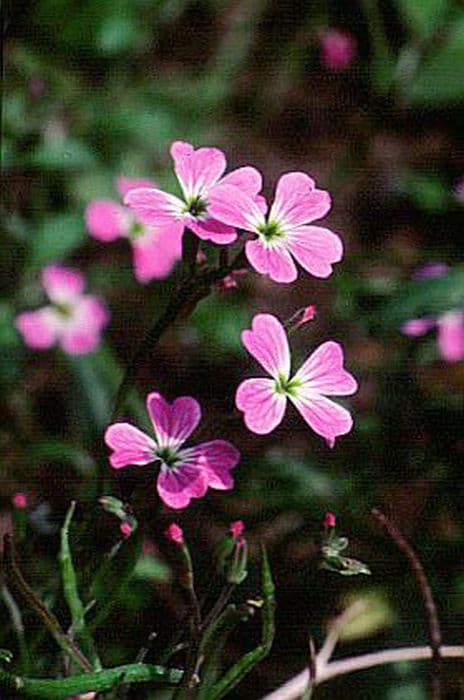Colewort Crambe cordifolia

ABOUT
Crambe cordifolia, commonly known as colewort, is a perennial plant characterized by its substantial foliage and impressive floral display. The leaves of colewort are large, heart-shaped, and a deep green color, often with a slightly wavy or puckered texture. The surface of the leaves has a leathery feel and is slightly glossy in appearance. When it blooms, colewort produces a cloud of tiny white flowers that form a dense and frothy canopy above the foliage. These blossoms are held on numerous branched stems that rise well above the leaves, creating a striking contrast against the green backdrop. The flowers are typically small yet numerous, contributing to its ethereal and billowy look when in full bloom. Overall, the appearance of the colewort combines robust greenery with delicate flowering, making it a visual standout in any garden setting.
About this plant
 Names
NamesFamily
Brassicaceae
Synonyms
Colewort, Giant Sea Kale, Greater Sea Kale, Heartleaf Crambe
Common names
Notobassia cordifolia, Crambe cordata
 Toxicity
ToxicityTo humans
Crambe cordifolia, commonly known as colewort, is not widely recognized as a toxic plant to humans. There is limited information regarding its toxicity, and it does not typically appear on lists of poisonous plants. However, like many plants, it could cause a reaction or be potentially harmful if a person has specific allergies or sensitivities. In general, eating ornamental plants is not advised and doing so could result in gastrointestinal discomfort or other symptoms depending on individual tolerance and the quantity consumed.
To pets
Colewort (Crambe cordifolia) is also not commonly known to be toxic to pets. There is a lack of specific reports on its toxicity towards domestic animals such as dogs and cats. As with humans, general caution should be taken to prevent pets from ingesting plants that are not intended for consumption as they may experience gastrointestinal upset or other adverse reactions if they are sensitive to the plant. Always monitor pets around ornamental plants and consult a veterinarian if any unusual signs of illness appear after ingestion.
 Characteristics
CharacteristicsLife cycle
Perennials
Foliage type
Deciduous
Color of leaves
Green
Flower color
White
Height
6 feet (1.8 meters)
Spread
4 feet (1.2 meters)
Plant type
Herb
Hardiness zones
7
Native area
Caucasus
Benefits
 General Benefits
General Benefits- Ornamental Value - Crambe cordifolia, commonly known as Colewort, is valued for its impressive cloud of frothy white flowers which add a striking visual element to gardens and landscapes.
- Drought Tolerance - Once established, Colewort is tolerant of drought conditions, making it suitable for gardens in arid climates or for water-wise gardening practices.
- Attracts Pollinators - The abundant flowers of Colewort attract a range of pollinators including bees and butterflies, which are beneficial for garden biodiversity and pollination of other plants.
- Low Maintenance - Colewort is relatively low maintenance, requiring minimal care once it is established, which makes it a convenient choice for gardeners of all skill levels.
- Erosion Control - With its large leaves and deep rooting system, Colewort can help stabilize soil and control erosion on slopes and in garden settings.
- Architectural Interest - The tall stature and large, bold foliage of Colewort adds architectural interest to garden designs, offering a good background plant for borders or as a focal point.
 Medical Properties
Medical PropertiesThis plant is not used for medical purposes.
 Air-purifying Qualities
Air-purifying QualitiesThis plant is not specifically known for air purifying qualities.
 Other Uses
Other Uses- Colewort can be grown as a natural barrier or privacy screen due to its large size and dense foliage, which can provide a visual block in gardens or landscapes.
- The plant's robust nature makes it suitable for combating soil erosion, particularly on slopes or in areas with loose soil that require stabilization.
- With its ability to thrive in coastal environments, Colewort can be used in seaside gardens to create a rustic, wild aesthetic resistant to salty winds.
- This species serves as an excellent background plant in mixed borders, contributing height and texture to support other flowering plants in the design.
- The plant's flowers can be cut and used in large floral arrangements, providing a dramatic, airy effect with their cloud-like clusters of white blossoms.
- Colewort leaves can be used in compost heaps as a green layer, contributing to the nutrient balance necessary for successful decomposition.
- Due to its mass of leaves and deep root system, Colewort is suitable for planting on steep banks to help absorb rainwater and reduce runoff.
- The plant can be used as part of wildlife-friendly gardens to offer a habitat for insects, particularly as its flowers are attractive to different species of bees.
- Gardeners can grow Colewort for the purposes of creating microclimates within the garden, as its size offers shade and shelter to more delicate plants.
- In large public parks or open spaces, Colewort can be used to create a visual impact with its bold foliage and height, making it a feature plant in landscape design.
Interesting Facts
 Feng Shui
Feng ShuiThe Colewort is not used in Feng Shui practice.
 Zodiac Sign Compitability
Zodiac Sign CompitabilityThe Colewort is not used in astrology practice.
 Plant Symbolism
Plant Symbolism- Resilience: Crambe cordifolia, also known as Colewort, is known for its ability to withstand tough environmental conditions, symbolizing the human capacity to endure and thrive in the face of challenges.
- Adaptability: As a plant that can grow in various types of soils, Colewort represents the ability to adapt to different situations and remain flexible.
- Abundance: With its mass of small, delicate flowers, Colewort can signify abundance and the multitude of opportunities or blessings that life can offer.
- Bounty of nature: The prolific nature of Colewort, producing many flowers and seeds, embodies the generous and giving aspects of the natural world.
- Protective qualities: The plant's large leaves and height can provide shelter to smaller plants and animals, symbolizing protection and support within a community or ecosystem.
 Water
WaterColewort (Crambe cordifolia) prefers to be watered deeply and allowed to dry out slightly before the next watering. Watering frequency should be approximately once a week, but this can vary depending on the weather and soil conditions. During the growing season, ensure that it receives about 1 inch of water per week, whether through rainfall or manual watering. In particularly hot or dry periods, you may need to water twice a week. Reduce the amount of water during the winter when the plant is dormant, ensuring the soil doesn't become waterlogged.
 Light
LightColewort thrives best in full sun conditions, meaning it should receive at least six hours of direct sunlight per day. The ideal spot for this plant would be in a garden area that is exposed to unfiltered sunlight for most of the day. However, colewort can tolerate some light shade, especially in areas with very intense midday sun.
 Temperature
TemperatureColewort is hardy and can tolerate a wide temperature range. It can survive minimum temperatures down to about 20°F (as it is rated for USDA hardiness zones 5 through 9), making it suitable for many temperate climates. The ideal temperature range for robust growth is between 60°F and 75°F. It is important to protect the plant from extreme cold and frost, which can damage the foliage and roots.
 Pruning
PruningPruning colewort is not essential but can be done to maintain its shape and remove any spent or dead flowers after blooming. Pruning should be done shortly after the flowering period in midsummer to encourage new growth and possibly a second bloom. Occasionally, it may be necessary to cut back the plant in late winter or early spring to remove dead foliage and tidy up the plant before new growth begins.
 Cleaning
CleaningAs needed
 Soil
SoilColewort thrives in well-draining, loamy soil with a pH ranging from neutral to slightly alkaline (pH 7.0-7.5). It's best to mix garden soil with compost and a handful of grit or perlite to improve drainage and fertility.
 Repotting
RepottingColewort, being a large perennial, does not require frequent repotting and is typically planted directly in the ground. It is generally repotted only if it outgrows its space or for division every few years.
 Humidity & Misting
Humidity & MistingColewort prefers moderate humidity levels in its natural outdoor environment and does not have specific humidity requirements when grown in a typical garden setting.
 Suitable locations
Suitable locationsIndoor
Not ideal for indoor growth due to size and light needs.
Outdoor
Plant in full sun, well-draining soil; space plants 60-90cm apart.
Hardiness zone
5-9 USDA
 Life cycle
Life cycleCrambe cordifolia, commonly known as colewort, begins its life cycle with seed germination, typically in the spring when soil temperatures are suitable for growth. Following germination, the plant develops a rosette of large, coarse leaves, which grows at a basal level initially. The plant undergoes vegetative growth throughout the growing season, establishing a strong root system and foliage. In subsequent years, usually by the second year, it produces tall flowering stems that can reach up to 2 meters high, with numerous small white flowers in dense clusters. After the blooming period, which occurs in early to mid-summer, the flowers are followed by seed pods that mature and release seeds for propagation. The plant then enters a period of senescence, often dying back to the ground in winter, with the cycle repeating if seeds have been successfully dispersed and conditions allow for new growth.
 Propogation
PropogationPropogation time
Spring to Summer
Crambe cordifolia, commonly known as Colewort, is most commonly propagated through division. The best time to carry out this method is in the spring, just before new growth begins. To propagate by division, carefully dig up the entire plant, ensuring you retain as much of the root system as possible. Using a sharp spade or knife, divide the root ball into several sections, making sure that each division has at least one growth bud. Plant these divisions into well-prepared soil, spacing them about 24 inches (approximately 61 centimeters) apart to allow for their ample growth. Water the newly planted divisions thoroughly to settle the soil around the roots and help them establish. This method is advantageous because it maintains the characteristics of the parent plant and allows for quick establishment in the garden.









